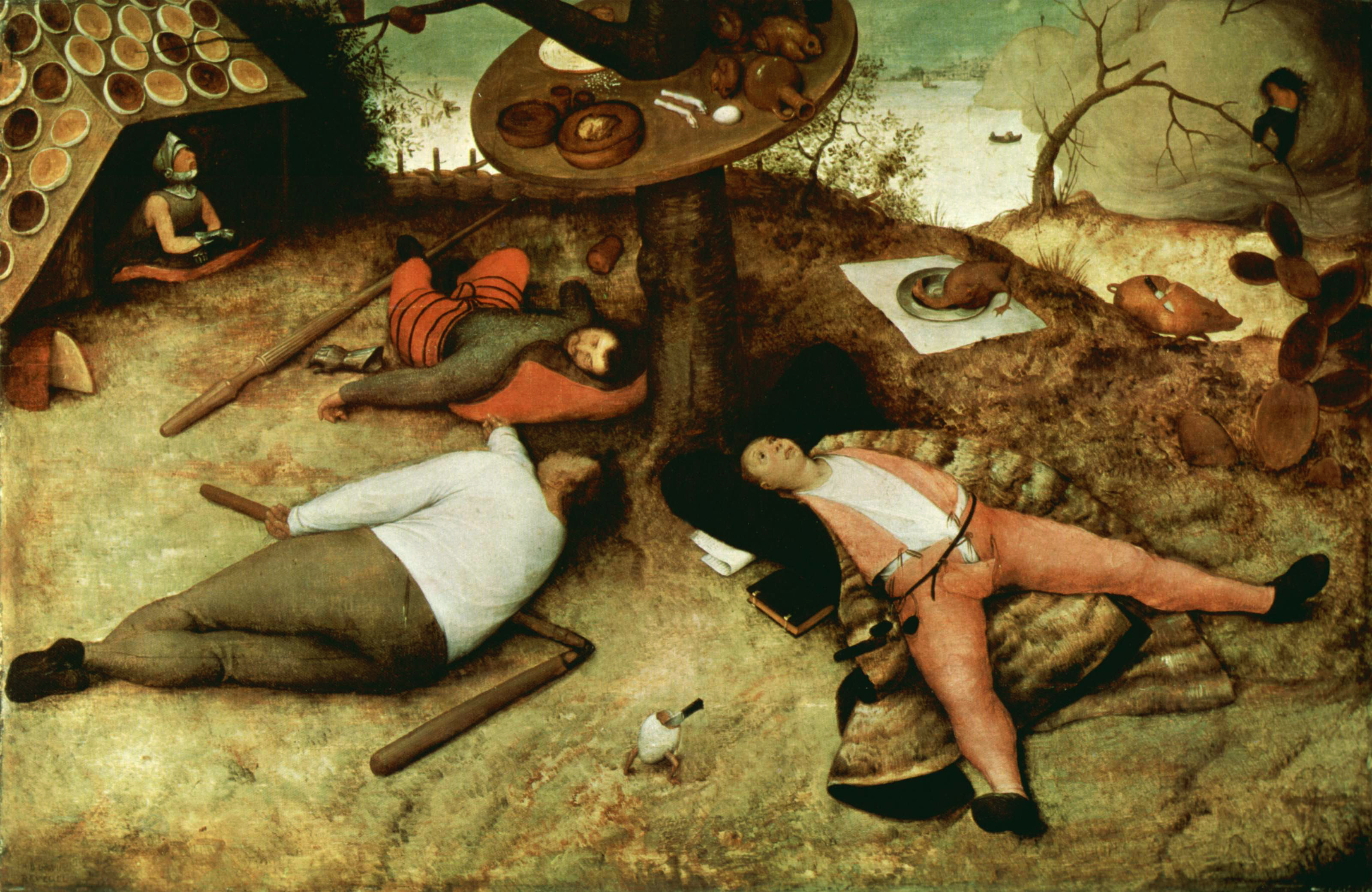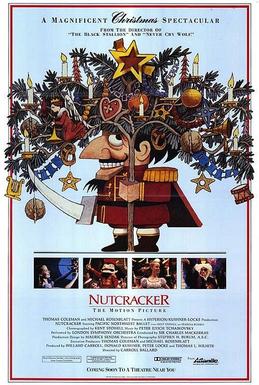My musicologist friend Chris once related to me this theory that his doctoral advisor has about Tchaikovsky’s score for the Nutcracker, in which the musical themes of the Grand Pas-de-Deux and the final Waltz and Apotheosis indicate the death of the young heroine. Now I have seen many and many a Nutcracker, ranging from the haunting, pared down Baryshnikov/ABT rendition captured in the 1977 film starring MB and Gelsey Kirkland, to the very traditional and true-to-libretto, Royal Winnipeg account, to the kooky, Sendak-designed PNB extravaganza, to Mark Morris’ Hard Nut, as well as multiple performances by different companies of the more garden variety version. And in not a single one of these various accounts does Clara/Marie expire. Well, maybe with Baryshnikov she comes close – the Grand Pas-de-Deux there is so erotic and swoony that one thinks perhaps that Clara is experiencing the little death, if not the big Death. And then she floats away, thanks to movie magic.
So I started to wonder, as my Thanksgiving-induced brain fog
subsided, was this deathliness and darkness in the original story? And could
Tchaikovsky have been responding, in his music, to the written text?
E.T.A Hoffmann wrote
the ersatz fairy tale of “The Nutcracker and the Mouse King” in 1816, at the
height of the Romantic era. I had always thought that this was the source of
the ballet libretto, but in fact, a short and not very scholarly search through
the literature on the Nutcracker (which turns out to be fairly substantial)
reveals that this is not the case. The story was translated into French and
adapted to the more bourgeois and staid tastes of mid-nineteenth-century Paris
by Alexandre Dumas (père); he took out the really weird parts and toned down
the original’s ambiguity, according to most of the things I read. It was his
version that Petipa liberally adapted in creating the libretto for the 1892
ballet.
Whether the heroine is Marie Stahlbaum (as in Hoffmann) or
Clara Silberhaus (as in Dumas), or some compound of the two, all the ballet
versions that I know of, except for the PNB/Sendak account, cut out the long
flashback, as told by Drosselmeyer to Clara/Marie, of the Nutcracker’s tragic
origin, and get straight to the business of his wounding by a jealous Fritz
(transformed into a naughty little brother from the older playmate of the
Hoffmann story), his close run battle with the Mouse King, Clara/Marie’s heroic
intervention, the passage into a wonderland via a snowy woodland, and a long,
happy display of visual candy before the dream dissipates and the little girl
awakes in the real world, very much alive.
I would have to re-watch the 1977 ABT
film (no penance there) to be certain, but even that version ends with the
implication that she wakes from a wonderful dream sad, but not dead. In the PNB
version, which retains the story of Princess Pirlipat as well as other elements
of the Hoffmann tale not featured in the standard ballet libretto, Marie
(played in the party scene by a little girl, but in the end of Act I and
throughout Act II by a prima ballerina), returns to her childish form, and
wakes up disoriented and dismayed, but very much alive.
In several versions I have seen, Drosselmeyer is played with
a certain, serio-comic, creepiness that extends to his relationship with the
pre-adolescent heroine (especially noticeable when the adult, but childlike
Kirkland dances Clara); the taint of inappropriate sexual desire lends an acid
undertone to the cloying sweetness of the ballet, with its sugarplums and
bonbons galore. The story, in its bare outlines, could always be read as a parable about a young girl’s first love and
her coming of age; Clara/Marie discovers her agency (by throwing her shoe at a
mouse), conquers her fears, saves her prince, and enjoys the rewards.
For PNB’s version, Sendak and company went back to the Hoffmann
story for inspiration, rather like
redactors of the Bible going back to the
Aramaic and Hebrew sources. Clearly, they found something there that suggested
to them this transformation. While Marie is played in Act I Scene I by a child
(albeit a fantastically talented child), when she rises from her faint at the
end of the battle in Scene II she is an adult. To me, that’s the ballet
responding to the Hoffmann original’s strange treatment of its heroine. At the
beginning Hoffmann tells us that Marie is the youngest of her family of three
children, and that she is seven years old. However, somewhere in the course of
events, she becomes the “lady” of a medieval romance, loved and desired by the
Nutcracker Prince, who prefers to wear her favor into battle, and who
ultimately consents to marry him, in his human form as the nephew of her
godfather. Or does she? The line between the child’s imagination, reality, and
allegory fluctuates and dodges in Hoffmann’s story; the reader is never quite
allowed to know where she stands.
But the death thing? I listened for that this time, while
the Sugar Plum Fairy and her Cavalier spun about, smiling so hard you might
think their faces would crack. In comes the harp, with a series of rising and
falling arpeggios, and then the strings, cascading down, lilting, aching. Yup.
Something tragic there. The second theme, introduced by the oboe floating in
way up high, followed by the clarinet answering, is absolutely delicious, but
not like a sweet. Rather, it’s a clear, slightly fizzing drink, a little
intoxicating… very quickly this becomes a swoony, big-moment, full on Romantic
swell of musical feeling, with the strings urging everything forward and the
horns and the tympani crashing out affect, the piccolos twittering in distress,
and then finally it all wraps up with a big drumroll and some blasts from the
brass. So is this death? Or that other thing so often compared to death? Or
just the way a child feels when the dream of total self-indulgence is shattered
by the intrusion of the real?
I am not a musicologist, so I am just going on intuition,
notoriously misleading here, but I would have to
say that Tchaikovsky is
definitely giving us the end of something big. The waltz that follows
immediately upon the Grand Pas de Deux is almost manically cheerful, as if it
is trying to banish all that darkness and messiness and humanity from the ear
and replace it with a big, showy wedding cake. But I do like the way in the ABT
film that Baryshnikov made the Grand Pas a lovers’ duet into which Drosselmeyr
intrudes, ending the enchantment; all this cannot last, he seems to say.
Which takes me back to Hoffmann’s story. There love and
beauty are inexorably linked to suffering, as when her godfather tells the
little girl, who is beside herself at being called a liar, “Dear Marie, you
were born a princess like Pirlipat, for you rule a bright and beautiful land.
But you will have to suffer much if you are to look after Nutcracker, for the
Mouse King will pursue him in every land across every border.”
His prediction proves true – the Mouse King is not above
extortion, appearing to Marie at night and making demands. She has to give up
all her Christmas candy to protect her beloved Nutcracker, and worse, her sugar
dolls, including “Joan of Arc, whom Marie did not particularly care about,” and
“a red-cheeked child” who is surely a confectionary version of herself. The Mouse King even demands that she
sacrifice her Christmas dress – which the “Christ Child had given her” – and her
picture books. At this point, the Nutcracker, now for some reason bleeding
actively like some saintly stigmatic, comes briefly to life to tell her not to keep
giving up her pretty things, but instead to find him a sword.
And even after the Mouse King lies dead, Hoffmann does not
let the reader off the hook; Marie may gawp, awestruck and admiring of her
prince’s kingdom, but he himself retains a less-than-sanguine outlook. For
example, in Gingerbreadholm on the Honey River, he tells her that the people
are “nice to look at, but they’re in terrible moods because they suffer from
toothaches.” Rot! Decay! Crankiness!
Even more mordantly, upon the pair’s arrival in the wondrous
Confectionary City (which struck me as the pattern for Oz in many ways), Hoffmann
gives us a totally bizarre scene, like something out of Dante’s Purgatory, in
which a ridiculously assorted quartet of faux-allegorical processions comes
into conflict in the city’s central square, before an obelisk made of cake.
Just as the squabble is heating up and heads are starting to roll, however,
someone shouts out “Candyman!” and everyone falls silent and still, into deep reverie.
In a matter-of-fact way, the prince explains that the Candyman is a mysterious
power that controls the destiny and ultimately ordains the destruction of all
the people of Candyland, and upon hearing the name, the citizens must cease
their doings and contemplate “what is
the nature of man, and what is his fate?”
 |
| Pieter Bruegel, The Land of Cockaigne, 1567. Sausages and gluttony also figure prominently in Hoffmann's story. |
Forces of destruction are everywhere present, while Marie
marvels and gapes. In another aside, the prince relates how, not that long ago,
the giant Sweettooth nearly devoured the Marzipan Castle, but was deterred by
the sacrifice of Marmelade Grove, an entire district of the city.
The final episode of the story, in which the real-life
version of the Nutcracker comes to Marie’s house and proposes marriage to her,
reads wry and fey; how old is she? And what does it mean for a little girl from
a bourgeois family in early 19th century Nuremburg to go off and
rule as “the queen of a country in which shimmering Christmas forests and
glazed marzipan castles… can be seen, if only you look”?
That last statement, which could be read straight as a kind
of “believe, dream, fly” kind of cheese-ball mysticism, is in fact probably the
trickiest thing in the whole, strange Hoffmann tale. Marie’s kingdom is a
chimera, an illusion, visible only to the eyes of those immersed in fantasy,
which could be a good thing (the Romantic view) or a dangerous thing (the
rationalist view), or simply a thing that screens the real ugliness of the
world from view (the pragmatic view, maybe?). In this case, perhaps Marie is
really dead, or mad, and Hoffmann is telling us so, obliquely, by saying that
you might choose to imagine her absence in terms of ruling a fantastic kingdom,
which is nicer, but less truthful.
The Nutcracker it seems, exists to be interpreted. In the
words of Newman Levy’s “Bluebeard,” “The ordinary story isn’t gory, it’s a
jest!” But the extraordinary story (Hoffmann’s, Baryshnikov’s) seems to mine
deep veins of what you might call romantic realism beneath the candy-coating. Love
hurts, sweetness harms, dreams disappoint and delude us… now there’s a charming
little Christmas story!
 |
| Next up for the Portlandia rats? "The Nutcracker -- a Rodent's Eye view"? |


No comments:
Post a Comment